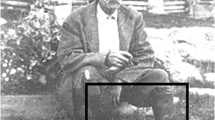Abstract
In congenital clubfoot, residual deformities are not well-documented and they may change depending on different treatments. To identify the treatment that provides better outcome at maturity, we studied the computed tomography of two cohorts of patients affected with congenital clubfoot who were treated using two distinct protocols. Forty-seven clubfeet were treated according to the traditional protocol of our hospital and 61 were treated according to the Ponseti technique. The normal feet of the unilateral deformities served as controls. All patients were followed to skeletal maturity. The ankle torsion angle and the declination angle of the neck of the talus were higher than normal but different only in patients treated with the traditional method. The calcaneocuboid angle was lower but only in patients treated with the Ponseti method. The shape of the talar joints was altered in many feet regardless of protocol. The CT images suggest the modifications of the torsion angle of the ankle, the declination angle of the neck of the talus, and the calcaneocuboid angle at maturity are related to the treatment protocol followed. The Ponseti manipulative technique provided better anatomical results in comparison to our traditional technique.





Similar content being viewed by others
References
Codivilla A. Sulla cura del piede equino varo congenito: nuovo metodo di cura cruenta. [Congenital talipes equinovarus: a new method of surgical treatment]. Arch Chir Orthop. 1906;23:245–258.
Farsetti P, Caterini R, Mancini F, Potenza V, Ippolito E. Anterior tibial tendon transfer in relapsing congenital clubfoot. J Pediatr Orthop. 2006;26:83–90.
Howard CB, Benson MKD. Clubfoot: its pathological anatomy. J Pediatr Orthop. 1993;13:654–659.
Ippolito E, Farsetti P, Caterini R, Tudisco C. Long-term comparative results in patients with congenital clubfoot treated with two different protocols. J Bone Joint Surg Am. 2003;85:1286–1294.
Ippolito E, Fraracci L, Caterini R, Di Mario M, Farsetti P. A radiographic comparative study of two series of skeletally mature clubfeet treated by two different protocols. Skeletal Radiol. 2003;32:446–453.
Ippolito E, Fraracci L, Farsetti P, De Maio F. Validity of the anteroposterior talocalcaneal angle to assess congenital clubfoot correction. AJR Am J Roentgenol. 2004;182:1279–1282.
Ippolito E, Fraracci L, Farsetti P, Di Mario M, Caterini R. The influence of treatment on skeletal pathology of clubfoot. CT study at maturity. J Bone Joint Surg Br. 2004;86:574–580.
Ippolito E, Mancini F, Di Mario M, Farsetti P. A comparison of resultant subtalar joint pathology with functional results in two groups of clubfoot patients treated with two different protocols. J Pediatr Orthop B. 2005;14:358–361.
Ippolito E, Ponseti IV. Congenital clubfoot in the human fetus: a histological study. J Bone Joint Surg Am. 1980;62:8–18.
Irani RN, Sherman MS. The pathological anatomy of clubfoot. J Bone Joint Surg Am. 1963;45:45–52.
Jacob RP, Haertel M, Stussi E. Tibial torsion calculated by computerized tomography and compared to other methods of measurements. J Bone Joint Surg Br. 1980;62:238–242.
Johnston CE 2nd, Hobatho MC, Baker KJ, Baunin C. Three-dimensional analysis of clubfoot deformity by computed tomography. J Pediatr Orthop B. 1995;4:39–48.
Manes E, Costa CM, Innao V. Treatment of congenital clubfoot during the first years of life. Chir Organi Mov. 1975;62:301–314.
Marino-Zuco C. Trattamento del piede torto congenito [Treatment of congenital clubfoot]. Roma Arte della Stampa. 1934:9–28.
Pirani S, Zenznik L, Hodges D. Magnetic resonance imaging study of the congenital clubfoot treated with the Ponseti method. J Pediatr Orthop. 2001;21:719–726.
Ponseti IV. Congenital Clubfoot: Fundamentals and Treatment. New York, NY: Oxford University Press; 1996.
Ponseti IV, El-Khoury GY, Ippolito E, Weinstein SL. A radiographic study of skeletal deformities in treated clubfoot. Clin Orthop Relat Res. 1981;160:30–42.
Ponseti IV, Smoley EN. Congenital clubfoot: the results of treatment. J Bone Joint Surg Am. 1963;45:261–275.
Settle GW. The anatomy of congenital talipes equinovarus: sixteen dissected specimens. J Bone Joint Surg Am. 1963;45:1341–1354.
Turco VJ. Resistant congenital clubfoot treated by one stage posteromedial release with internal fixation: a follow-up report with a fifteen years experience. J Bone Joint Surg Am. 1979;61:805–814.
Waisbrod H. Congenital clubfoot: an anatomical study. J Bone Joint Surg Br. 1973;55:796–801.
Acknowledgments
We thank Dr Giovanna Brancato of the Italian Institute of Statistics (ISTAT) for the statistical analysis.
Author information
Authors and Affiliations
Corresponding author
Additional information
Each author certifies that he or she has no commercial associations (eg, consultancies, stock ownership, equity interest, patent/licensing arrangements, etc) that might pose a conflict of interest in connection with the submitted article.
Each author certifies that his or her institution has approved the human protocol for this investigation, that all investigations were conducted in conformity with ethical principles of research, and that informed consent for participation in the study was obtained.
About this article
Cite this article
Farsetti, P., De Maio, F., Russolillo, L. et al. CT Study on the Effect of Different Treatment Protocols for Clubfoot Pathology. Clin Orthop Relat Res 467, 1243–1249 (2009). https://doi.org/10.1007/s11999-008-0699-0
Received:
Accepted:
Published:
Issue Date:
DOI: https://doi.org/10.1007/s11999-008-0699-0




